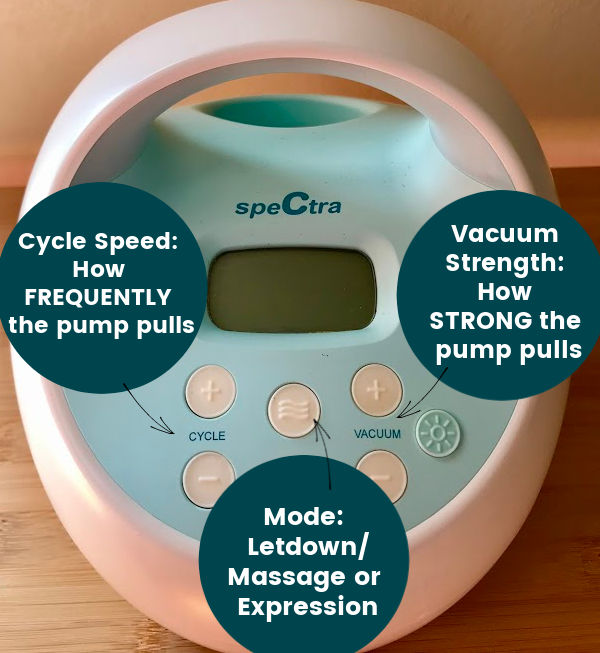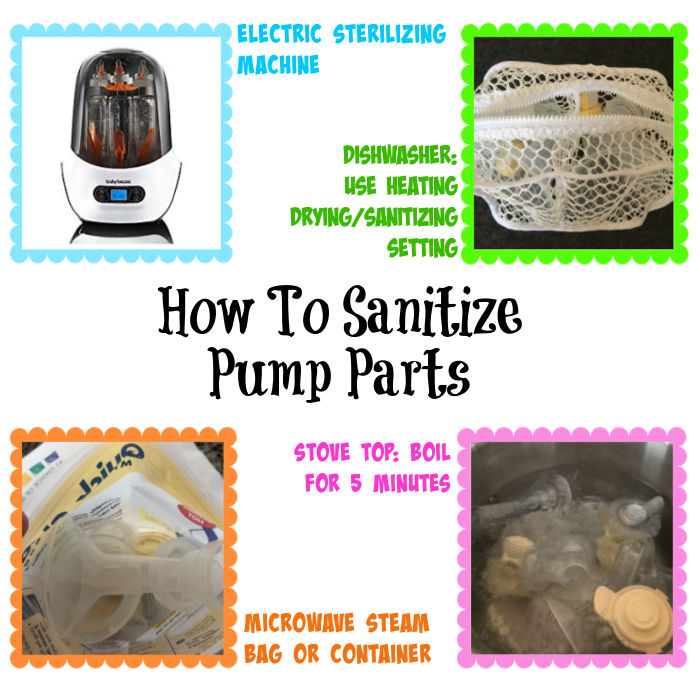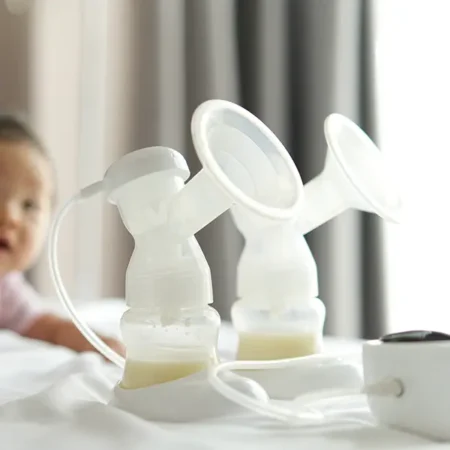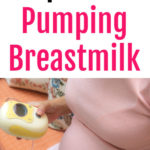Are you planning to pump breast milk after your baby is born? Here are some things that can help you with getting ready for breastfeeding and pumping.

This post may contain affiliate links, which means that if you click through and make a purchase, I’ll be compensated at no additional cost to you. I only recommend products I love! More info here.
Here’s what you might want to do to prepare for pumping while you’re still pregnant.
1. Get a breast pump
Obviously, the first thing that you need to do is get a breast pump!
If you live in the United States and have health insurance, you are usually entitled to one breast pump per pregnancy at no cost.
I thought that dealing with my health insurance to get a breast pump would be a giant hassle with a lot of red tape, but the process is actually super easy! In most cases, you can just work directly with a medical device company.
With Aeroflow Breastpumps, all you need to do is fill out a short form, and they will do everything else – find out what you’re eligible for, contact your doctor, and send you the pump.
All you have to do is pick out the pump. So which pump should you get?
It obviously depends on what your options are. Most people will want a double electric breast pump. (If you can get one with a built-in battery, I’d recommend it.)
Here are my detailed thoughts on the most popular options.
2. Learn how to use your breast pump
In some cases, your insurance company won’t provide you with your pump until after your baby is born. But if you do get your pump while you’re still pregnant, I would recommend doing a few things before your baby is born – especially if you haven’t used a breast pump before.
(I found trying to figure out how to use mine a little challenging in the newborn phase when I was running on two hours of sleep.)
Here’s what I would suggest doing.
Try out the different settings
It’s a good idea to get familiar with your pump and understand what all the buttons do.

Turn the pump on and off, and try putting it in different modes (letdown/massage and expression) and increasing and decreasing the suction.
Learn how to assemble your pump parts

Learn how to take all of your pump parts apart and put them back together. (For the first week I pumped, I didn’t know that you had to take them apart to wash them.)
Finally, if your pump has a battery, charge it.
3. Sterilize your pump parts
Most breast pump manufacturers recommend that you sanitize your breast pump parts before the first use.
Check the instruction manual to confirm that all of the parts should be sterilized. (Some manufacturers will recommend not washing tubing or not sanitizing valves, for example.)

More on how to sterilize your pump parts here.
4. Get a few pumping accessories
In addition to your pump, there are a few other things that I would get for pumping before your baby is born.
There is a ton of pumping gear out there that can be helpful and make your life easier, but most of it can wait until you actually start pumping and figure out what you need. This is what I would want to have on hand up front:
- Wash basin – The CDC recommends washing breast pump parts and bottles in a dedicated wash basin rather than directly in a sink.
- An extra set of pump parts – Having a spare set can be really helpful if the set that came from your pump needs to be washed, or if you lose a piece.
- Hands-free pumping bra – If you’re going to be spending any real amount of time pumping, being able to do other things while you pump is key! A hands-free pumping bra will hold your breast shields up so that you can do other things while you pump.
5. Invest in nursing tops
If you’re planning on breastfeeding, it’s a good idea to have a few nursing shirts on hand when you get home from the hospital so that you have easy access.
Just a few t-shirts will work – you can wear a hoodie or sweater over them if it’s cold out.
If you’re not able to invest in nursing shirts, that’s totally fine. Another option is the “two shirt method”, where you wear a tank top over a baggier normal shirt. Then, you lift the baggy shirt up and pull the tank top down when you need to pump or nurse.
This keeps your stomach covered, which is nice for privacy and keeping warm, but allows easy access.
6. Practice hand expression
Hand expression is a way of using your hands to express breast milk, rather than a baby or a breast pump. It is an extremely useful skill to have as a breastfeeding parent.
(Once, I forgot my pump charger in a hotel room and had to go 12 hours without a functioning pump while flying home. It was awful, but would not have been nearly as bad if I’d known how to hand express.)
Hand expression can also be useful for harvesting colostrum to feed your baby before your milk comes in.
Make sure to ask your provider first before practicing hand expression while pregnant. Nipple stimulation may induce labor in women at term.
More on pumping while pregnant here.
7. Learn as much as you can about the first few weeks of breastfeeding
I struggled so much with breastfeeding in the first month or so of my first baby’s life. I stressed out over his weight loss, different nurses showed me how to latch my baby on in completely different ways, and it seemed to take forever for my milk to come in.
It’s a good idea to learn everything you can about what to do and what’s normal in those first few weeks.
If you plan to exclusively pump, you may want to check out this post on exclusively pumping from birth.
If you plan to nurse and pump, consider taking the Ultimate Breastfeeding Milkology class, which will walk you through everything in about 90 minutes. (Use the code EPUMP10 for 10% off.)
8. Make a plan for getting help in case you need it
When I was flailing around trying to figure out breastfeeding, I spent a lot of time trying to find someone who could help in person via search engine. Again, on two hours sleep, I wasn’t at my best for trying to figure out what lactation consultant would take my insurance and whether or not a given one was close enough to a home visit.
I would suggest finding a few options and having the information written down before you give birth.
A few ideas for how to do this:
- Ask the hospital you plan to deliver at if there are lactation consultants or a breastfeeding support group available for moms who deliver there.
- Find out from your insurance if there are any lactation consultants that take your insurance (you can usually log in and do a provider search).
- Look for breastfeeding clinics in your area (I went to one that was held once a week in a baby clothing store, for example).
9. Order labels for your bottles
If you are planning on sending your baby to daycare, you may need to get some kind of labels for the bottles that you send with your baby.
I used Mabel’s Labels to labels my baby’s bottles for daycare. They are super cute!

Not sure when you should start pumping after you have your baby? More on this here!
Hopefully this helps you with getting ready for breastfeeding and pumping during pregnancy! Let me know if you have any questions in the comments!

















Leave A Reply!